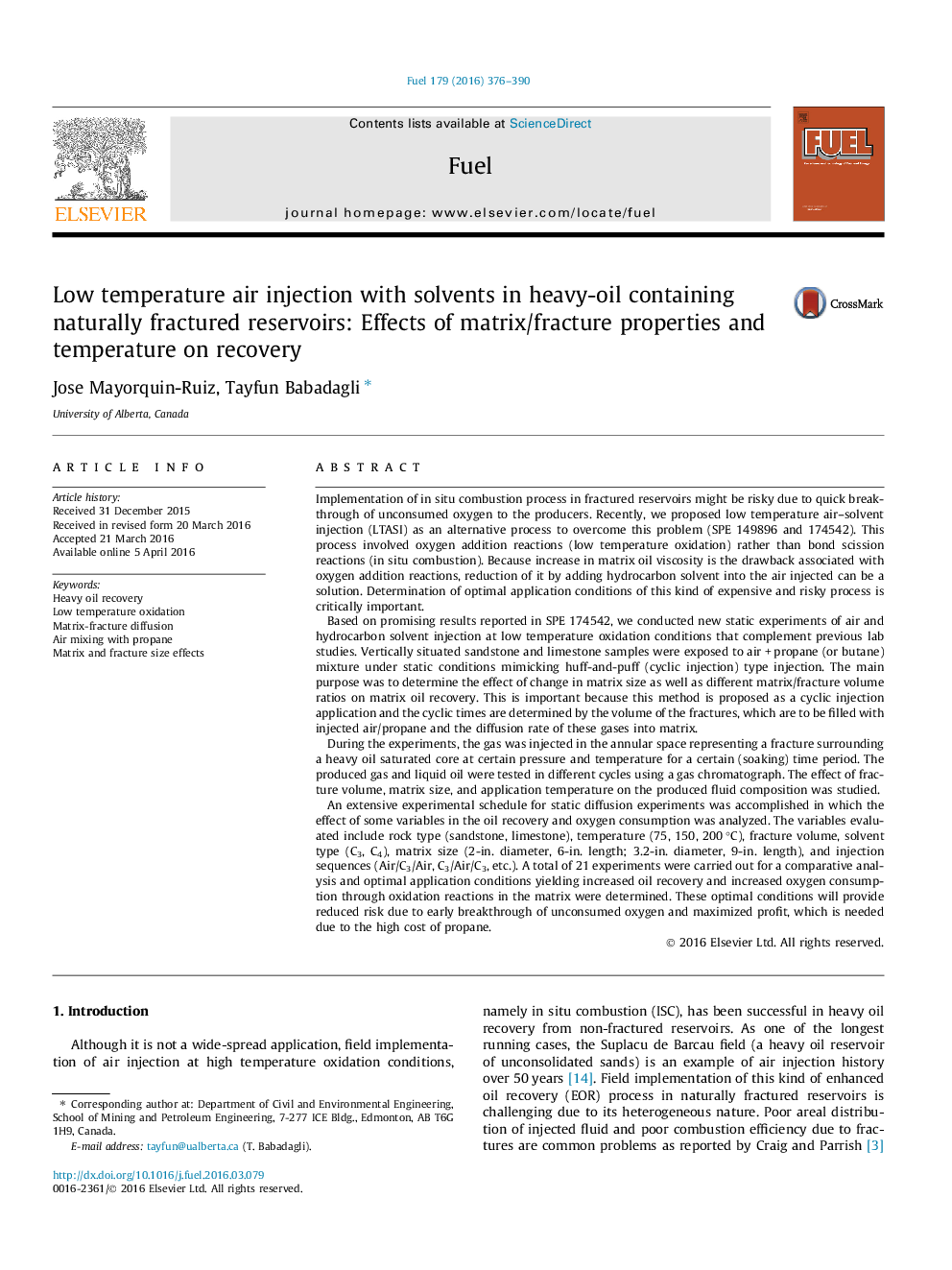| کد مقاله | کد نشریه | سال انتشار | مقاله انگلیسی | نسخه تمام متن |
|---|---|---|---|---|
| 205107 | 461096 | 2016 | 15 صفحه PDF | دانلود رایگان |
Implementation of in situ combustion process in fractured reservoirs might be risky due to quick breakthrough of unconsumed oxygen to the producers. Recently, we proposed low temperature air–solvent injection (LTASI) as an alternative process to overcome this problem (SPE 149896 and 174542). This process involved oxygen addition reactions (low temperature oxidation) rather than bond scission reactions (in situ combustion). Because increase in matrix oil viscosity is the drawback associated with oxygen addition reactions, reduction of it by adding hydrocarbon solvent into the air injected can be a solution. Determination of optimal application conditions of this kind of expensive and risky process is critically important.Based on promising results reported in SPE 174542, we conducted new static experiments of air and hydrocarbon solvent injection at low temperature oxidation conditions that complement previous lab studies. Vertically situated sandstone and limestone samples were exposed to air + propane (or butane) mixture under static conditions mimicking huff-and-puff (cyclic injection) type injection. The main purpose was to determine the effect of change in matrix size as well as different matrix/fracture volume ratios on matrix oil recovery. This is important because this method is proposed as a cyclic injection application and the cyclic times are determined by the volume of the fractures, which are to be filled with injected air/propane and the diffusion rate of these gases into matrix.During the experiments, the gas was injected in the annular space representing a fracture surrounding a heavy oil saturated core at certain pressure and temperature for a certain (soaking) time period. The produced gas and liquid oil were tested in different cycles using a gas chromatograph. The effect of fracture volume, matrix size, and application temperature on the produced fluid composition was studied.An extensive experimental schedule for static diffusion experiments was accomplished in which the effect of some variables in the oil recovery and oxygen consumption was analyzed. The variables evaluated include rock type (sandstone, limestone), temperature (75, 150, 200 °C), fracture volume, solvent type (C3, C4), matrix size (2-in. diameter, 6-in. length; 3.2-in. diameter, 9-in. length), and injection sequences (Air/C3/Air, C3/Air/C3, etc.). A total of 21 experiments were carried out for a comparative analysis and optimal application conditions yielding increased oil recovery and increased oxygen consumption through oxidation reactions in the matrix were determined. These optimal conditions will provide reduced risk due to early breakthrough of unconsumed oxygen and maximized profit, which is needed due to the high cost of propane.
Journal: Fuel - Volume 179, 1 September 2016, Pages 376–390
